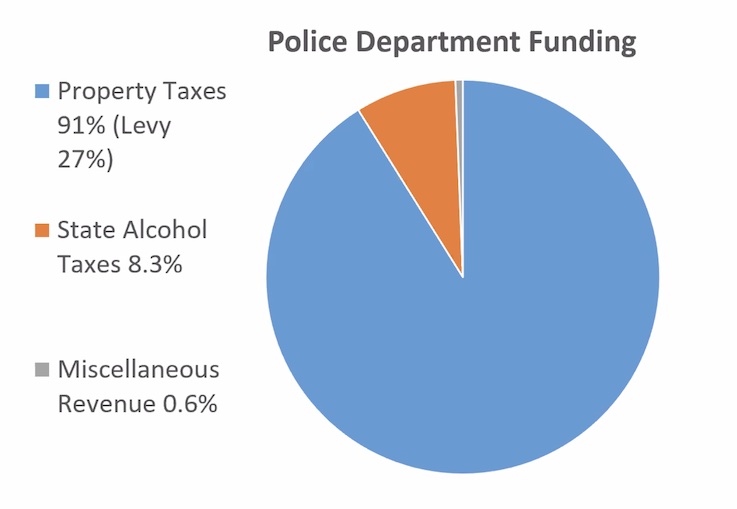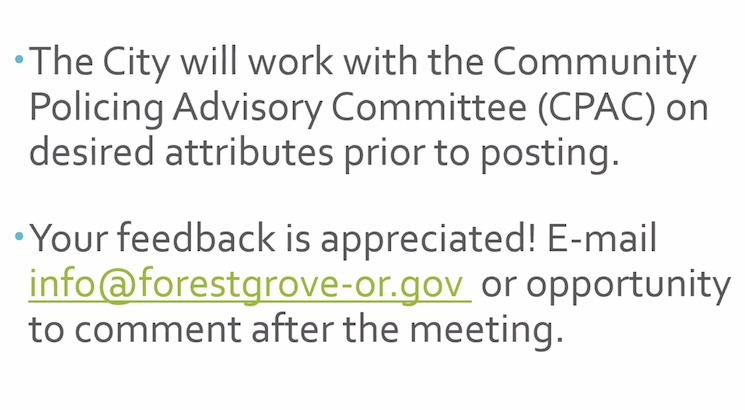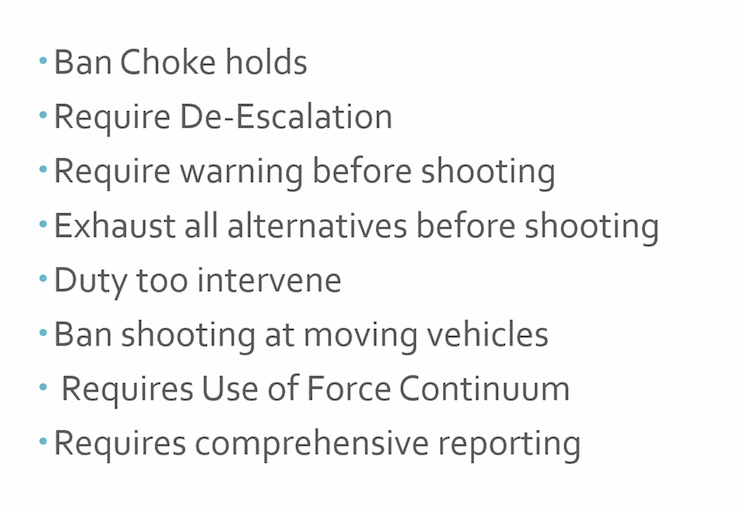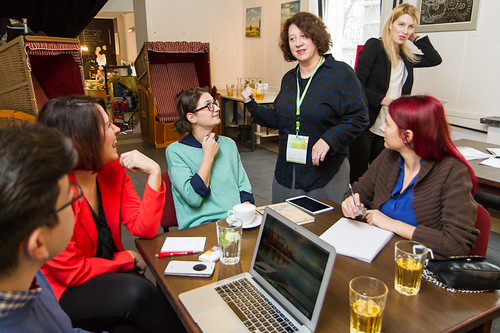
Since moving back to the USA in 2009, and before the pandemic, I attended a lot of public meetings by local, state and national officials, both elected and otherwise, and for some meetings, I live-tweeted what was happening. My goal was to try to generate some excitement for civic engagement and, in the cases of meetings that aren’t recorded and available later for public viewing, like town hall meetings with US Senators, to capture how certain things were being talked about / addressed. I also wanted to see if city, county, state and national officials were paying attention to Twitter, seeing if they responded when they were tagged or named in a post, etc. (for the most part, no, they aren’t paying attention).
The city of Forest Grove, Oregon held its 2021 annual town meeting online rather than in person because of the COVID-19 pandemic. And even though, I assume, the meeting was recorded and will be made available for viewing any time somehow, I decided to live-tweet the event, both to offer my commentary and to show as an example in workshops and classes I teach about what live-tweeting an event can look like. I also find it amusing to see how live-tweeting can affect search engine results.
I have the text of all the tweets below, with each tweet as a separate paragraph. Also here in this blog, I embedded the links that I attached to tweets. Sorry for misspellings and any confusion – live-tweeting requires fast typing and you cannot go back and correct tweets once they are out there:
Tweets began at 9:44 AM · Jan 30, 2021:
About to log in to the Forest Grove, Oregon annual town meeting, 1st-ever via the Interwebs. On the agenda: police. We’ve had some ugly incidents here & they still haven’t been addressed. If I decide to live-tweet it, it will be in the replies below.
Logged in & we’ve already had our first “does anyone know how to…” from a panelist.
Mayor is warning not to be cute and make your Zoom name and title “Jake from State Farm.” He did that for a meeting and was kicked off because they didn’t know who he was.
Lowell Greathouse of the Committee for Community Involvement is kicking off the meeting. He’s the MC of this meeting. I so wish the CCI was on Twitter and Facebook & Reddit.
Background: Here’s the 1st story from the local Forest Grove newspaper, the @FGNewsTimes, about the ouster of the police chief more than a year ago, which kicked off the growing distrust of the community regarding the police.
Now speaking is the city manager, Jesse VanderZanden. He’s introducing all the city officials & staff in attendance. VanderZanden played a key role in Forest Grove Police Chief Janie Schutz.
VanderZanden is now addressing the departure of Chief Schutz. He is saying he is not anxious to discuss personnel matters.
City manager is saying that the city has been transparent, having released emails between the chief and him, all official documents. He says all are available for the public and that they “tell the story.”
“We could have done a better job” regarding communication – city manager. Public disclosure procedures have been revised to make it easier for public to get info.
“What I’d like to do is thank the former chief.” He’s now praising her transparency, how she built community connections, and what she did to promote the police facility.
My opinion: THIS IS SO RIDICULOUSLY OVERDUE. Shame on the city for taking so long. Reprehensible.
How Forest Grove, Oregon police are funded (from the slides now)

Forest Grove police funding levels. Along with this slide, the city manager when through the why costs increase (primarily salary and benefits, some additional staff).

Says interim Forest Grove police chief will get the option to stay another year. Here is how city will advertise for the chief’s position. Says city will have opportunities to participate in the hiring process.
Now talking about how they will create community panels for the hiring process, how they will try to make it a diverse representation from the community.

If you have things you want the Forest Grove police chief job description to have regarding what kind of qualities the person should have, etc., the city manager says they want this feedback from residents. Here’s how to do that:

Apologies for not putting in alt text on the pics. I believe the slides will be available on the Forest Grove, Oregon’s city web site and I certainly hope all materials will be accessible for people with disabilities.
He’s now reviewing why the city needs a new police station and the current design process. If you went to the police station open houses in 2019, or watch Chief Schutz’s excellent video on the subject, you know all this.
City manager is now making a pitch for why the cost is cost-effective, the difficulty of passing a bond, the reluctance of residents regarding paying for this, etc. The presentation is now done.

Now Forest Grove, Oregon interim police chief Henry Reinmann is speaking. He’s touting that the station is more transparent, policies they have adopted, etc.
Says these police policies have already been adopted in Forest Grove, Oregon. Now going through stats: type of calls, number of calls, etc. You can see these stats in the presentations that will be available on the Forest Grove city web site (or should be).

Now talking about mental health resources. Now talking about history.
Now going through the history of policing. While he’s doing that, here’s one of the issues last year: Forest Grove Police Officer Steven Teets, off duty, terrorized a family in the middle of the night. & was NOT immediately arrested
Officer Teets is still employed, FYI, as are officers that initially covered for him. This incident, plus Chief Shutz’s firing, plus someone dying after being tased last year, & other things that haven’t made the news, have affected trust of police here.
Interim police chief is still doing his “history of policing” and very general presentation about approaches to policing. Has not made any reference to Black Lives Matter, to warrior training, white supremacy in police ranks, etc. Just very general stuff.
Now touting the relatively new Community Policing Advisory Commission, which replaced the citizen’s committee that was focused on BOTH police & fire (there is now no citizen’s committee regarding fire services).
Forest Grove interim chief is still touching on very general things. No specifics about what the city of Forest Grove, Oregon is doing – just general things about what’s needed – “transparency” and “trust”, etc. This is all in his sides which will be available on FG web site.
Finally is giving examples of specific changes. Says sergeant promotions interviews at Forest Grove, Oregon had no tactical questions – questions were about diversity, equity, etc. Says they will change how they train and who they hire.
Forest Grove interim police chief reviewing state and national changes that will affect the Forest Grove police department. Says they will change what they test for. Will focus more on behavioral competencies.
Is talking about systemic bias of society, in general, but has not acknowledged that police, specifically, have a problem with systemic racism. Is framing police problems as a reflection of all society’s problem.
Now referencing Bob Dylan’s “The Times They Are A Changin’.” And returning floor to meeting chair.
Now going to the questions submitted in advance. First question is regarding having a problem like “Cahoots” in Eugene in Forest Grove, Oregon, regarding unarmed mental health staff going to some calls. Interim chief says, instead, they are using the “Colorado model.”
Mayor can’t get his video to turn on. But we can hear him.
Mayor is reminding everyone that all of these changes will have financial costs and that there is no one big fix that can solve everything.
Interim chief is now addressing what the subjects are covered in the police academy and who makes that determination.
Questions regarding diversity training, number of officers that identify as people “of color,” etc. Interim chief is noting that the force makeup does not reflect the community. One officer “of color”, three women. Says they will do better.
Question about Chief Schutz’s departure. City manager says former chief never made a complaint “about gender or otherwise.” Me: this is in contrast to what she said in the previous articles I shared earlier in this tweet thread.
City manager is now saying that the city’s policies cover gender discrimination and how the policies and work place culture aren’t at all discriminatory, that people are held accountable, etc.
City manager is now reviewing stats and diversity.
Questions in Q & A box is filling up. I just submitted this: “Is there a prohibition on Forest Grove police officers taking so-called ‘warrior’ training? Does the chief know which officers have had such training and what do they do to address that?”
They are now addressing a question I submitted previously regarding the Western Washington County Fire Department & relationship with the T V F & R.
They are now clarifying titles and terms. Mayor says there is no effort nor interest in becoming a part of TVF&R. Noting (sudden!) retirement of former chief. Says interim chief hiring is not a precursor to joining TVF & R.
Councilor Ewing says a team has been formed that is working through “facts.” Says she is still gathering facts. Says she can’t raise her hand for or against TVF& R until she has more info.
Forest Grove Interim fire chief Patrick Fale, who is from TVF & R, says he knows of no interest by that agency to expand into Western Washington County, Oregon. Says there is a meeting in February about future of fire departments in this area.
Now a question and suggestion about backyard burns from someone who suffers from lung issues. Mayor is clarifying current regulations.
Mayor says the Forest Grove sustainability commission needs to look into a year-round burn, if that really needs to happen. Says advisory commissions need to advise. Council member Ewing is now weighing in.
Council member Ewing is now talking about “equitable” issues regarding people who need their fireplaces for warmth, older people who cannot afford to get rid of yard debris any other way.
And now the obligatory grocery store question. Paul Downey is answering, but I have no idea what he’s talking about. Sorry, folks. Something about a developer, a grocery store, affordable housing, etc.
MC is now about to list all of the questions relating to the Officer Teets situation (see my earlier tweet with link to the story). Notes that, because of the legal nature of the outstanding issue, some things won’t be answered at this meeting.
Interim chief is noting there are two different investigations – one regarding Officer Teets, one regarding the response by the other Forest Grove officers. Notes he can’t say much more because it’s a current investigation.
Question regarding make-up of CPAC and why there’s not a member of the chamber or business. I think – I was typing and missed both the question and answer. Sorry.
CPAC seems to not yet be meeting regularly. They haven’t set a regular meeting. It sounds like they’ve had only one meeting.
Question someone has submitted, similar to what I have submitted, still not answered: “Do you know if any of your police officers are involved in domestic terrorist groups in their personal lives such as proud boys etc
And what are you doing to check this?”
councilmembers are now lauding the CPAC & the interim chief instead of answering the questions submitted. This has gone on for several minutes, celebrating Forest Grove CPAC instead of addressing questions.
Now again answering questions on diversity training. Interim chief is again talking about systemic bias in society but not systemic racism in police departments, specifically. No questions related to this have been addressed (I am making a list of them).
Comment and discussion regarding hiring and diversity. No specifics, just general comments about turnover and recruitment.
A question in regarding food banks and how the city is supporting them. I’m not going to tweet the response. Sorry, my fingers are getting tired.
Reading through the Q & A. Someone, maybe more than one person, is posting racist comments, attacks on the “political left.” His/her comments are all anonymous, of course. So disturbing. But absolutely representative of some people in Forest Grove, Oregon.
Someone asked how to volunteer during the pandemic. You have to freakin’ be kidding me. Did anyone reference me? No. Do they know about me? Yes. So, frustrating. What I posted on the Q & A “volunteering during the pandemic? If only there was someone in the community was an expert in volunteering, including virtual volunteering (sigh). Who writes and blogs extensively on this subject specifically. (sigh).”
They are asking my question – might be the last one. Here it is: “Research is showing that a lot of police departments have members that are white supremacists and/or identify as “sovereign citizens.” Does either (fire or police) department have screening, interview…”
“… social media and supervision practices and policies in place that would help prevent such people from becoming a part of the ranks and would help identify such people who may already be a part of either department?”
Interim chief says only that the they look at social media activity. Did not address the question at all.
Mayor says the city has “taken a stand” regarding “hate.” Says they need to have that attitude all the time. Feels good that they’ve had conversations with groups. But still hasn’t answered the question regarding how white supremacists are identified in the ranks.
Council woman Ewing is now making statements about these difficult times.
Me speaking now: I encourage all of you who asked questions about identifying members of the proud boys, sovereign citizens, etc. in the police department to attend the next Forest Grove city council meeting and ask them AGAIN. & to write them directly, again, to the city.
Chair is trying to get the participants to please address the questions regarding membership in proud boys, sovereign citizens, etc.
Interim chief says social media review & interviews of new hires addresses this. Interim chief is implying that social media monitoring of police officers is ongoing. Now Council Wenzel is celebrating how well the town meeting has gone, staff that helped, etc.
Meeting over. Survey at the end. Hope lots took it. With all my problems with how some questions were not answered, I have to give kudos to Forest Grove, Oregon for doing this meeting. Lowell Greathouse was a terrific MC – WELL DONE, sir! & now, to walk my dog.

 Updated February 1, 2019, at the bottom of the blog entry:
Updated February 1, 2019, at the bottom of the blog entry:



